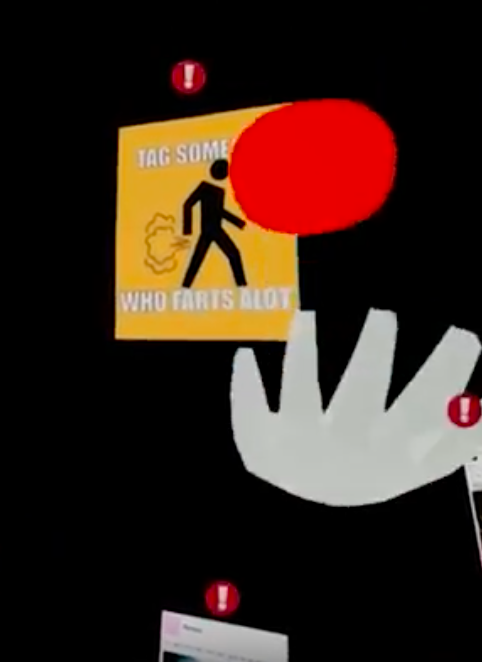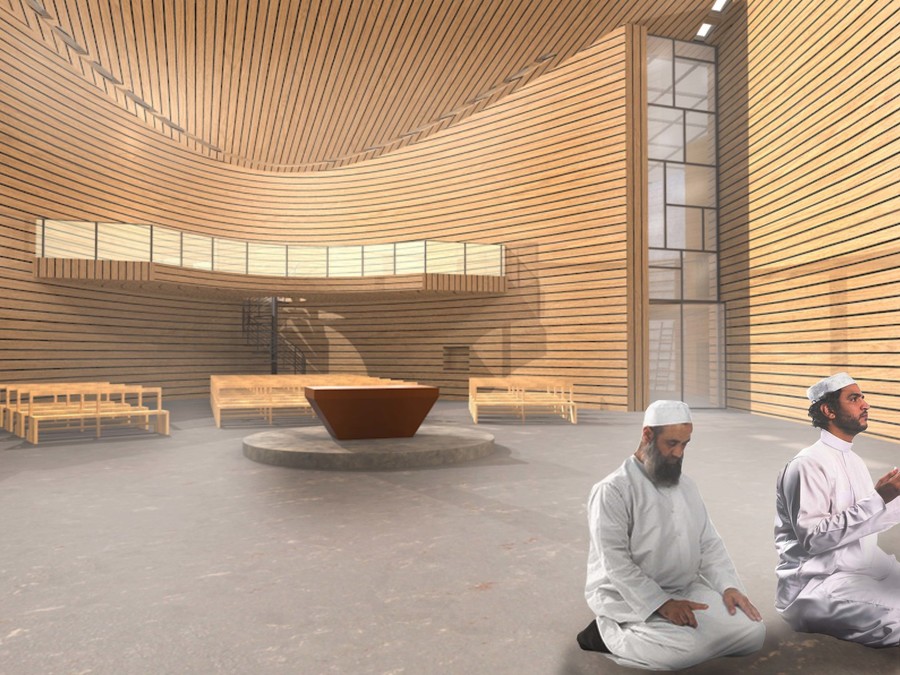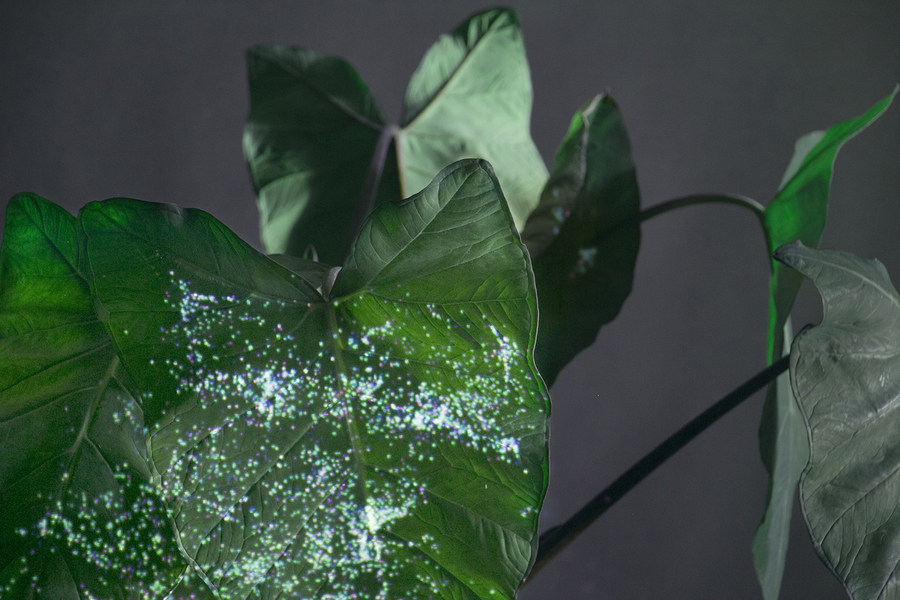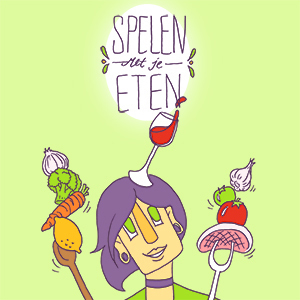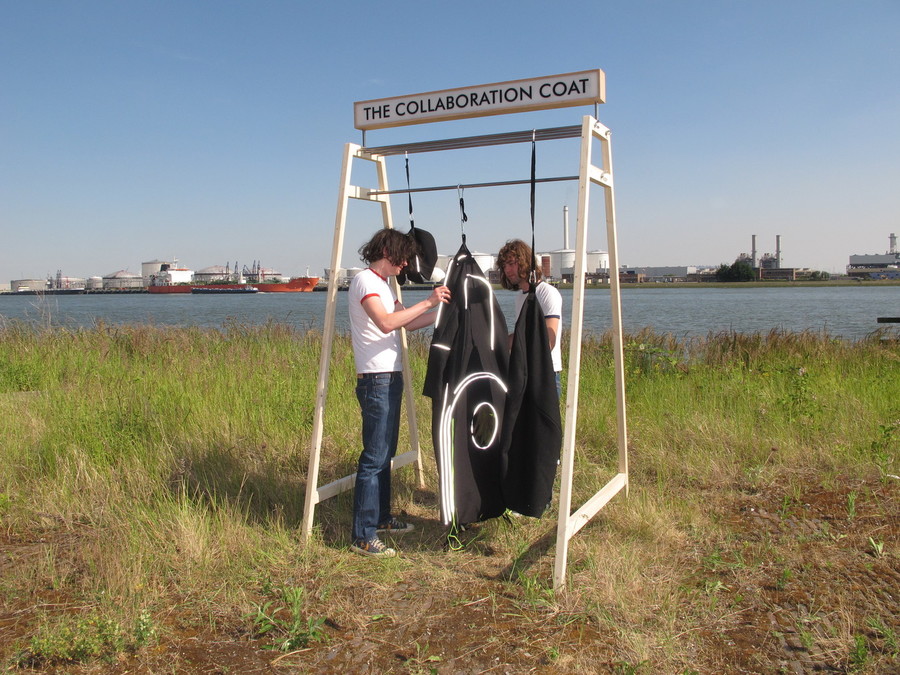Difference between revisions of "WdKA Graduation Show 2017"
(Created page with "{{Event |Location=WdKA, Rotterdam |Date=2016/06/29 |Type=Exhibition |Image=GraduationShow2017 |About=With their projects, the 2017 Social Practices graduates have nailed the i...") |
|||
| (11 intermediate revisions by 2 users not shown) | |||
| Line 1: | Line 1: | ||
{{Event | {{Event | ||
|Location=WdKA, Rotterdam | |Location=WdKA, Rotterdam | ||
| − | |Date= | + | |Date=2017/06/29 |
| + | |Enddate=2017/07/02 | ||
|Type=Exhibition | |Type=Exhibition | ||
| − | |Image=GraduationShow2017 | + | |Image=GraduationShow2017.jpg |
|About=With their projects, the 2017 Social Practices graduates have nailed the issues of today’s society. They position themselves as critical pioneers with a positive attitude. With their work they are going further than just denouncing problems. They translate problems into opportunities and offer tools to generate solutions. From virtual and artificial reality projects which allow us to experience the digital future ahead of us, to physical experiences exploring new materials and techniques with respect for Mother Earth. | |About=With their projects, the 2017 Social Practices graduates have nailed the issues of today’s society. They position themselves as critical pioneers with a positive attitude. With their work they are going further than just denouncing problems. They translate problems into opportunities and offer tools to generate solutions. From virtual and artificial reality projects which allow us to experience the digital future ahead of us, to physical experiences exploring new materials and techniques with respect for Mother Earth. | ||
| Line 10: | Line 11: | ||
The majority of the graduate projects have been developed in collaboration with professional partners and stakeholders, from scientific institutes to district residents. This approach as well as the themes our graduates deal with, are the proof of the changing role of designers and artists in future society and the professional field. The wicked problems of our multicultural society will be tackled by hybrid interdisciplinary teams, consisting of residents, scientist, designers, urban planners, local governments. | The majority of the graduate projects have been developed in collaboration with professional partners and stakeholders, from scientific institutes to district residents. This approach as well as the themes our graduates deal with, are the proof of the changing role of designers and artists in future society and the professional field. The wicked problems of our multicultural society will be tackled by hybrid interdisciplinary teams, consisting of residents, scientist, designers, urban planners, local governments. | ||
| − | In this exhibition our graduates not only focus on the development of 'good' pieces of art or design, but, they also propose or realize alternative systems, procedures and processes. | + | In this exhibition our graduates not only focus on the development of 'good' pieces of art or design, but, they also propose or realize alternative systems, procedures and processes. Read more about the research behind some of the graduate projects following the links below: |
| − | Read more about the research behind some of the graduate projects following the links below: | + | }} |
| − | + | {{Article Selection Overview | |
| − | + | |Article=Facebook Therapy VR | |
| − | + | }} | |
| − | + | {{Article Selection Overview | |
| − | + | |Article=Fusion | |
| − | |||
| − | |||
| − | |||
}} | }} | ||
| − | {{ | + | {{Article Selection Overview |
| − | | | + | |Article=Future Flex |
}} | }} | ||
| − | {{ | + | {{Article Selection Overview |
| − | | | + | |Article=Let's PLAY |
}} | }} | ||
| − | {{ | + | {{Article Selection Overview |
| − | | | + | |Article=Mother Earth Network |
}} | }} | ||
| − | {{ | + | {{Article Selection Overview |
| − | | | + | |Article=Playing With Your Food |
}} | }} | ||
| − | {{ | + | {{Article Selection Overview |
| − | | | + | |Article=Shutters |
}} | }} | ||
| − | {{ | + | {{Article Selection Overview |
| − | | | + | |Article=The Collaboration Coat |
}} | }} | ||
| − | {{ | + | {{Documentation |
| − | | | + | |Documentation='''Potentialities and desires''' |
| + | |||
| + | Let's take a good, hard look in the mirror! No, not you as a person, but we as a society. For our dominant ways of acting and thinking are killing us, driving us apart and leading us to all kinds of civil unrest. Welcome in 2017, something is at stake! Neoliberalism and nationalism; individualism and ethnocentrism; narcissism and sentimentalism, they are driving us to the edges. Ecological, psychological, social and economic stress are at an all-time high. | ||
| + | |||
| + | What we need are new stories, not of how disastrous the current situation is, but which help us understand and break out or our current dominant narratives. Sociologist, urbanist, psychologist, and also artist are trying to help get these to fruition. I see 'social practices' as another medium through which to analyse society. As a different way then relating to reality. Not through words, questionnaires or numbers; but through imagination and visual representations. Yes I put the bar high, but why else would you design or make art? | ||
| + | |||
| + | Coming to the WdKA Graduation Show 2017 I beforehand decided I would take it very seriously. For me, social practice was on trial. Here we have a first group of students who went through the new curriculum, set up to 'produce' graduates ready to engage in a different way with the changing demands of society and art. Would they succeed? Would they help me think differently about my city, my environment? Would they help me step back, but also step forward? To be aesthetically pleasing as well as conceptually relevant? Bold questions, which might be too big to demand from a graduation show, but on the other hand, why would you ask different questions from graduates? | ||
| + | |||
| + | I'm not an artist myself. I'm just a philosopher who want to help create a better world. Nothing more, nothing less. Rotterdam is my playground, helping me reflect on big questions as well as setting up experiments in collective action. So I have been reflecting on the role of social entrepreneurs in tackling social and urban questions, but I have also set up a voluntary run reading room (a public space which revolves around language, literature and imagination); I have been writing about potential futures in Rotterdam, but am also creating a new space on an island in Rotterdam where we bring together artists, scientist, policy makers and city makers to invent practical and conceptual futures. So moving back and forth between words and deeds I try to prefigure desirable futures. Art(ists) and designers are interesting for me, because they add a third element to this vocabulary. Whereas I am bound by words and actions, here we have material imagination added to the mix. It is with this in the back of my mind, that I went to the show. | ||
| + | |||
| + | '''Potential families or families with potential''' | ||
| + | |||
| + | After making several rounds, through the show, and the website (http://graduation.wdka.nl/) I discern three different ‘families’ of presenting/doing a ‘social practice’: | ||
| + | |||
| + | • ''Reusing materials'' – engaging with the narrative of climate change, resource scarcity and circular economy, graduates find new uses for ‘waste’ materials. Festival banners are folded like origami into new spatial objects (rest-i-fest, Anne Korthals) and salmon skins and scales are made into leather which can be used for shoes (Fisk, Melissa de Vos).These examples show how new products (embedded in an interesting story) can be fitted into a larger existing counter-narrative to our oil-based and wasteful economy. | ||
| + | |||
| + | • ''Engaging otherwise'' – picking up narratives around public space, isolation, filter bubbles and the need to meet across your particular group, these examples highlight new ways for people to meet and have conversations. Creating spaces and programmes to bring groups together and talk and think otherwise; meet groups you would normally pass by or wouldn't share space with are key here. Examples were [[Fusion]] (Annick Bongers) creating a physical space for different religions to come together, and Future Flex (Lilian Higgins) a series of playful workshops to engage organisation in approaching the uncertain future in a more play-based way. Again, they pick up an existing social narrative, but unlike adding products/objects, they offer engaging processes. | ||
| + | |||
| + | • ''Alternative storylines'' – the final family starts at the other end. They don’t try to add something to a narrative. Here the narrative is the object of engagement itself. A lot of artist fell into this categories. Ter Plekke (Maud Claessens) makes a homeless shelter come to life through illustrations which she turned into a clothing collection; Kankernormaal (Manouk van der Kooij) tries to turn cancer into a topic which isn't taboo anymore by using pillows, walls and thermo-ink; and Fabeltjesbrand (D'avellone van Dijk) which uses the function of old-school fables - to teach, insult, give political and moral advice - to comment on our current society, but also invites people to come up with new moral stories for today and tomorrow. The different examples unpack dominant narratives, but also invite us to engage with the narrative. | ||
| + | |||
| + | The last family I found most interesting for two reasons: more than the other families the whole range of specializations which are part of the curriculum were on display in the different pieces. It showed the diverse range of craftsmanship that can be put to work within social practice. This could of course be a coincidence. More importantly, these works are more subtle than the other two. They invite me, not as a user, or a participants, but as co-narrator. | ||
| + | |||
| + | Collectively the different families show the diverse range of stories which can be added to our society once we start using our imagination and material craftsmanship. It showed the potential of social practices to look differently into the mirror; to engage differently with reality and the future. It showed the strength of this particular 'brand' of art education. | ||
| + | |||
| + | Things to be desired | ||
| + | |||
| + | My enthusiasm about the potential doesn't mean all my desires were fulfilled. But I find it difficult to articulate them. Not in the sense that I lack the words. I think they have to do with a potential lack of conceptual depth, a lack of specificity and a lack of utopianism. More on them in a bit. But what makes it difficult to articulate has to do with a more basic question: what makes a particular piece a good example of a social practice? How to judge these works, especially since there aesthetic quality or the skills of the crafts used are not the right criteria. This is a question I think the designer/artist/WdKA have to address. So let me try to at least address these three different things to be desired: | ||
| + | |||
| + | • ''A lack of (conceptual) depth'' - In the end all projects boil down to objects/installations. Understandable, for it is an arts show. It also gives graduates the opportunity to show their particular skills at design, craft, video, photography, etc. But where is the conceptual complexity which comes with questions revolving around identity, stereotypes, privacy or ecology? What role do fields such as cultural analysis, sociology, or anthropology play in these works? It might be in their writing, but that is something I can't read at the show. This could easily be resolved of course. But would conceptual clarity strengthen these works? Would it change what is on display? Would it make them more relevant? Or is this just my desire to use words as my medium coming through? | ||
| + | |||
| + | • ''A lack of specificity'' - Concepts are one way of situating a work. Another is by ‘locating it’ in a specific place. While wandering through the exhibition, I wondered, how much are or should these works be specifically related to Rotterdam? Or related to an actual social practice? What is the role of reality in these works? Are these works by autonomous designers and artist reacting to current discussions (about identity and role models for instance, with installations on ‘whiteness’ and 'disneyfied' parties for kids) or are they made in conversation with a particular community? By situating a work, it would add specificity to a work. Would that make a work better? Or would it turn social practices into ‘community art’? And what is actually the relationship between the two? | ||
| + | |||
| + | • ''A lack of utopianism'' - finally I was slowly overwhelmed by a certain restlessness. For here were projects trying to unravel dominant narratives, proposing new spaces and social practices. But none of them had a certain anger or uneasiness about them. They all seemed (too) realistic, fitting within our current society. I was expecting to find some unrealistic, utopian proposals; practices which politicise the social. Or can't art by political in that way? Is that demanding the impossible from social practices? But what is actually the critical or political potential of social practices? | ||
| + | |||
| + | Some of the questions I pose are easily resolved (for instance by making background material and the thesis available at the show) others will require some deep thought. Working together with students from other disciplines and grounding them more in reality by going out into Rotterdam might work to address the second point. With regard to the last point, I don’t know if you can teach students to be more utopian. But by explicitly teaching them about utopianism, political art and all its potential and trouble, one could stimulate more students to make these kinds of work. | ||
| + | |||
| + | So I see different ways in addressing the questions the show help me pose. Addressing will strengthen the potential of the field of social practices. The exhibition made me curious about the further development of this emerging field and the role the WdKA can play in it. I'm already looking forward to next year’s shows. | ||
| + | |||
| + | Maurice Specht – 30 augustus 2017 | ||
}} | }} | ||
| − | |||
{{Events more}} | {{Events more}} | ||
Latest revision as of 13:11, 6 April 2018
About
Matters that catch the eye, amongst other issues are social media, the multicultural society and the deterioration of our planet. This is for example expressed in an interactive fashion installation that encourages social interaction that goes beyond the fast paved system and asks for patience, trust, helpfulness, appreciation and collaboration. Further on, in a speculative installation we get a preview of how it will be to communicate, understand and feel empathy for our planet. By feeling connected with our surroundings, we will be intrinsically motivated to live in a more sustainable way. Finally it is also possible to physically attack your most hated Facebook posts in a Virtual Reality game. The gap between reality and illusion almost disappears.
The majority of the graduate projects have been developed in collaboration with professional partners and stakeholders, from scientific institutes to district residents. This approach as well as the themes our graduates deal with, are the proof of the changing role of designers and artists in future society and the professional field. The wicked problems of our multicultural society will be tackled by hybrid interdisciplinary teams, consisting of residents, scientist, designers, urban planners, local governments.
In this exhibition our graduates not only focus on the development of 'good' pieces of art or design, but, they also propose or realize alternative systems, procedures and processes. Read more about the research behind some of the graduate projects following the links below:Links
Documentation
Let's take a good, hard look in the mirror! No, not you as a person, but we as a society. For our dominant ways of acting and thinking are killing us, driving us apart and leading us to all kinds of civil unrest. Welcome in 2017, something is at stake! Neoliberalism and nationalism; individualism and ethnocentrism; narcissism and sentimentalism, they are driving us to the edges. Ecological, psychological, social and economic stress are at an all-time high.
What we need are new stories, not of how disastrous the current situation is, but which help us understand and break out or our current dominant narratives. Sociologist, urbanist, psychologist, and also artist are trying to help get these to fruition. I see 'social practices' as another medium through which to analyse society. As a different way then relating to reality. Not through words, questionnaires or numbers; but through imagination and visual representations. Yes I put the bar high, but why else would you design or make art?
Coming to the WdKA Graduation Show 2017 I beforehand decided I would take it very seriously. For me, social practice was on trial. Here we have a first group of students who went through the new curriculum, set up to 'produce' graduates ready to engage in a different way with the changing demands of society and art. Would they succeed? Would they help me think differently about my city, my environment? Would they help me step back, but also step forward? To be aesthetically pleasing as well as conceptually relevant? Bold questions, which might be too big to demand from a graduation show, but on the other hand, why would you ask different questions from graduates?
I'm not an artist myself. I'm just a philosopher who want to help create a better world. Nothing more, nothing less. Rotterdam is my playground, helping me reflect on big questions as well as setting up experiments in collective action. So I have been reflecting on the role of social entrepreneurs in tackling social and urban questions, but I have also set up a voluntary run reading room (a public space which revolves around language, literature and imagination); I have been writing about potential futures in Rotterdam, but am also creating a new space on an island in Rotterdam where we bring together artists, scientist, policy makers and city makers to invent practical and conceptual futures. So moving back and forth between words and deeds I try to prefigure desirable futures. Art(ists) and designers are interesting for me, because they add a third element to this vocabulary. Whereas I am bound by words and actions, here we have material imagination added to the mix. It is with this in the back of my mind, that I went to the show.
Potential families or families with potential
After making several rounds, through the show, and the website (http://graduation.wdka.nl/) I discern three different ‘families’ of presenting/doing a ‘social practice’:
• Reusing materials – engaging with the narrative of climate change, resource scarcity and circular economy, graduates find new uses for ‘waste’ materials. Festival banners are folded like origami into new spatial objects (rest-i-fest, Anne Korthals) and salmon skins and scales are made into leather which can be used for shoes (Fisk, Melissa de Vos).These examples show how new products (embedded in an interesting story) can be fitted into a larger existing counter-narrative to our oil-based and wasteful economy.
• Engaging otherwise – picking up narratives around public space, isolation, filter bubbles and the need to meet across your particular group, these examples highlight new ways for people to meet and have conversations. Creating spaces and programmes to bring groups together and talk and think otherwise; meet groups you would normally pass by or wouldn't share space with are key here. Examples were Fusion (Annick Bongers) creating a physical space for different religions to come together, and Future Flex (Lilian Higgins) a series of playful workshops to engage organisation in approaching the uncertain future in a more play-based way. Again, they pick up an existing social narrative, but unlike adding products/objects, they offer engaging processes.
• Alternative storylines – the final family starts at the other end. They don’t try to add something to a narrative. Here the narrative is the object of engagement itself. A lot of artist fell into this categories. Ter Plekke (Maud Claessens) makes a homeless shelter come to life through illustrations which she turned into a clothing collection; Kankernormaal (Manouk van der Kooij) tries to turn cancer into a topic which isn't taboo anymore by using pillows, walls and thermo-ink; and Fabeltjesbrand (D'avellone van Dijk) which uses the function of old-school fables - to teach, insult, give political and moral advice - to comment on our current society, but also invites people to come up with new moral stories for today and tomorrow. The different examples unpack dominant narratives, but also invite us to engage with the narrative.
The last family I found most interesting for two reasons: more than the other families the whole range of specializations which are part of the curriculum were on display in the different pieces. It showed the diverse range of craftsmanship that can be put to work within social practice. This could of course be a coincidence. More importantly, these works are more subtle than the other two. They invite me, not as a user, or a participants, but as co-narrator.
Collectively the different families show the diverse range of stories which can be added to our society once we start using our imagination and material craftsmanship. It showed the potential of social practices to look differently into the mirror; to engage differently with reality and the future. It showed the strength of this particular 'brand' of art education.
Things to be desired
My enthusiasm about the potential doesn't mean all my desires were fulfilled. But I find it difficult to articulate them. Not in the sense that I lack the words. I think they have to do with a potential lack of conceptual depth, a lack of specificity and a lack of utopianism. More on them in a bit. But what makes it difficult to articulate has to do with a more basic question: what makes a particular piece a good example of a social practice? How to judge these works, especially since there aesthetic quality or the skills of the crafts used are not the right criteria. This is a question I think the designer/artist/WdKA have to address. So let me try to at least address these three different things to be desired:
• A lack of (conceptual) depth - In the end all projects boil down to objects/installations. Understandable, for it is an arts show. It also gives graduates the opportunity to show their particular skills at design, craft, video, photography, etc. But where is the conceptual complexity which comes with questions revolving around identity, stereotypes, privacy or ecology? What role do fields such as cultural analysis, sociology, or anthropology play in these works? It might be in their writing, but that is something I can't read at the show. This could easily be resolved of course. But would conceptual clarity strengthen these works? Would it change what is on display? Would it make them more relevant? Or is this just my desire to use words as my medium coming through?
• A lack of specificity - Concepts are one way of situating a work. Another is by ‘locating it’ in a specific place. While wandering through the exhibition, I wondered, how much are or should these works be specifically related to Rotterdam? Or related to an actual social practice? What is the role of reality in these works? Are these works by autonomous designers and artist reacting to current discussions (about identity and role models for instance, with installations on ‘whiteness’ and 'disneyfied' parties for kids) or are they made in conversation with a particular community? By situating a work, it would add specificity to a work. Would that make a work better? Or would it turn social practices into ‘community art’? And what is actually the relationship between the two?
• A lack of utopianism - finally I was slowly overwhelmed by a certain restlessness. For here were projects trying to unravel dominant narratives, proposing new spaces and social practices. But none of them had a certain anger or uneasiness about them. They all seemed (too) realistic, fitting within our current society. I was expecting to find some unrealistic, utopian proposals; practices which politicise the social. Or can't art by political in that way? Is that demanding the impossible from social practices? But what is actually the critical or political potential of social practices?
Some of the questions I pose are easily resolved (for instance by making background material and the thesis available at the show) others will require some deep thought. Working together with students from other disciplines and grounding them more in reality by going out into Rotterdam might work to address the second point. With regard to the last point, I don’t know if you can teach students to be more utopian. But by explicitly teaching them about utopianism, political art and all its potential and trouble, one could stimulate more students to make these kinds of work.
So I see different ways in addressing the questions the show help me pose. Addressing will strengthen the potential of the field of social practices. The exhibition made me curious about the further development of this emerging field and the role the WdKA can play in it. I'm already looking forward to next year’s shows.
Maurice Specht – 30 augustus 2017
